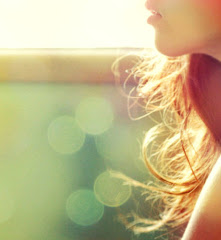What is your fave color? Do you know the meaning behind your fave color? It is said that people choose their fave color that reflect their behaviour. So it is not accidental. See the explanation of the meaning of each color. How about yours? Does the color suit your personality and behaviour?
How Color Alters Our Behavior
Color psychologists study these kinds of influences on humans and while their findings aren’t all-inclusive—many personal factors, like cultural norms and experiences, shape a person’s perception of color—they have discovered that color can alter behavior in unexpected ways.
Yellow
Yellow is an energetic color representing sunshine, vitality, and happiness. Researchers at a university in Amsterdam found that it was a mood lifter for many participants, though some believe a yellow room encourages aggression in people. It might also improve brain functions like memorization. In 2007, researchers in New York City worked with paint specialists to analyze how people behaved at cocktail parties hosted in yellow, red, and blue rooms. Those in the yellow room were more lively and boisterous compared to partiers in the other rooms and they ended up eating twice as much as anyone else.
White
Doctors and nurses wear white uniforms and hospital rooms are painted white because the color represents sterility for many people. Purity, innocence, light, and peace are common adjectives associated with the color white in our country. In China and Japan, it can symbolize mourning or death. Office walls are often white because it’s considered a neutral color, but it doesn’t always lead to the best work environment. A 1999 study showed that employees working in white-walled offices experienced nausea and headaches more than employees in red or blue workspaces.
Red
Like yellow, red is a stimulating color. It evokes confidence and enthusiasm and is attention getting (hence the color choice for stop signs and siren lights). Perhaps its cultural symbolism also explains why red is thought to produce better attention to detail. Seeing the color red can actually elevate blood pressure and make hearts beat faster, which might make it an optimal choice for people who need a quick burst of adrenaline. According to a 2005 British study, athletes who wear red perform better. Red improves performance outside of the sports world, too—a study published last year found that men rated women more attractive and sexually desirable when they wore red than when they wore other colors.
Pink
An offshoot of red, pink often has an opposite effect on people. Certain shades tend to promote calm and alleviate anger. After all, how angry could you stay in a bright pink room? A 1979 study by Dr. Alexander Schauss demonstrated that prison inmates kept in a pink room (the exact shade, similar in hue to bubblegum, is called Baker Miller Pink) for even a short period were considerably less hostile and aggressive. Participants of a similar study performed at the John Hopkins University Hospital in Maryland reported reduced appetites because of the pink exposure. Some also believe that seeing pink might cause people to taste sweetness (though it’s never made Pepto-Bismol more palatable to me).
Green
There’s something both refreshing and relaxing about the color green. Culturally, it suggests wealth and prosperity, but it also inspires renewal, openness, and peace. In a 2004 survey published in College Student Journal, participants were asked about their responses to certain colors. Most found that green increased their comfort and positivity levels because of green’s association with the environment and natural states. People also see green and think of lime flavor—one experiment showed that people given a cherry-flavored drink colored green thought it was lime.
Black
This stark color carries many connotations with it, including death, power, anger, dynamism, authority, and seduction. Research has found that offices using black as a primary color had workers who felt stronger and “tougher.” People who wear black usually feel more confident and attractive (the slimming effect helps) and people wearing black sometimes seem more sophisticated to others—probably why the little black dress has a home in most women’s closets.
Blue
Blue is a popular choice for favorite color and it’s a top pick for creating harmonious, open spaces—the right shades conjure images of vast blue oceans and skies. It emphasizes quiet moods and contemplation, but it’s also connected with depression (“feeling blue,” “got the blues,” etc.). A study published in the February 2009 issue of Science found that people explore their creative sides more when exposed to blue. Participants shown ads with blue backgrounds preferred ads that emphasized aesthetics, such as pretty or unique images of a product, over the product’s technical details.
Colors have an effect on our perception, moods, and even taste buds and the effect itself is heavily influenced by what they mean to us culturally, socially, and personally. Studying color psychology and its findings isn’t a key to unlocking universal truths, but it might teach us a few handy tricks for our daily lives—such as looking at the color blue before starting an art project, wearing red to get more dates, or investing in yellow paint to ensure a successful soiree.
(source from divinecaroline.com - images via justbesplendid)





















No comments:
Post a Comment